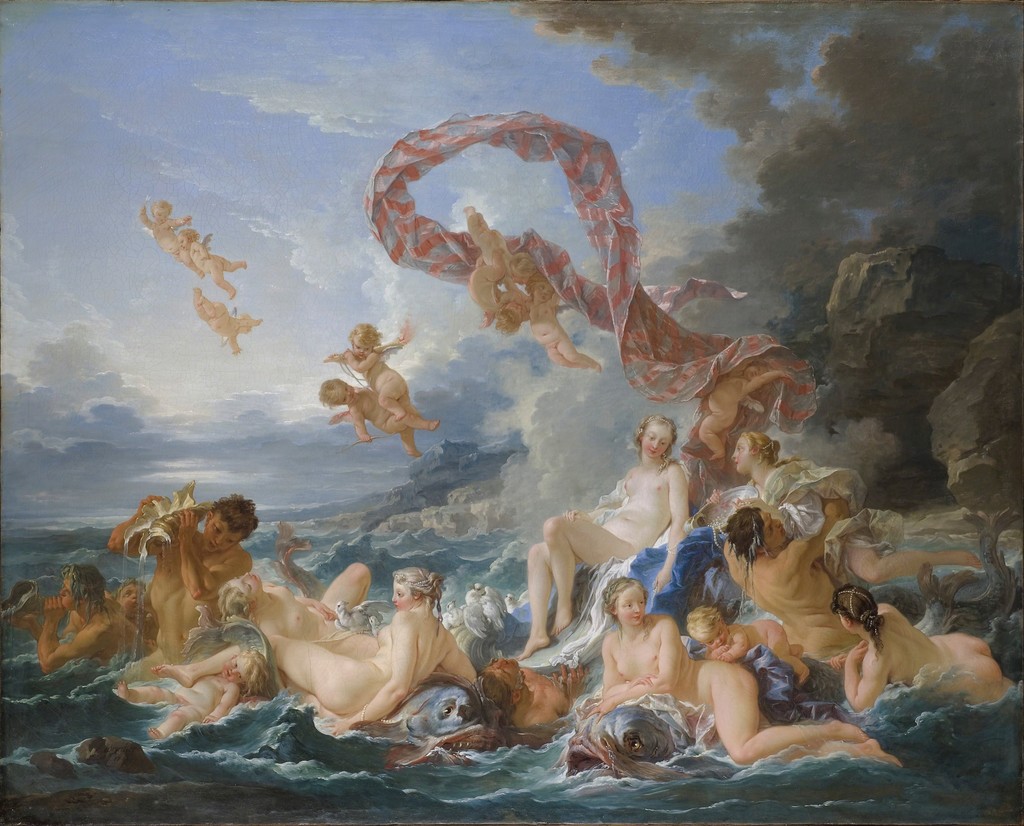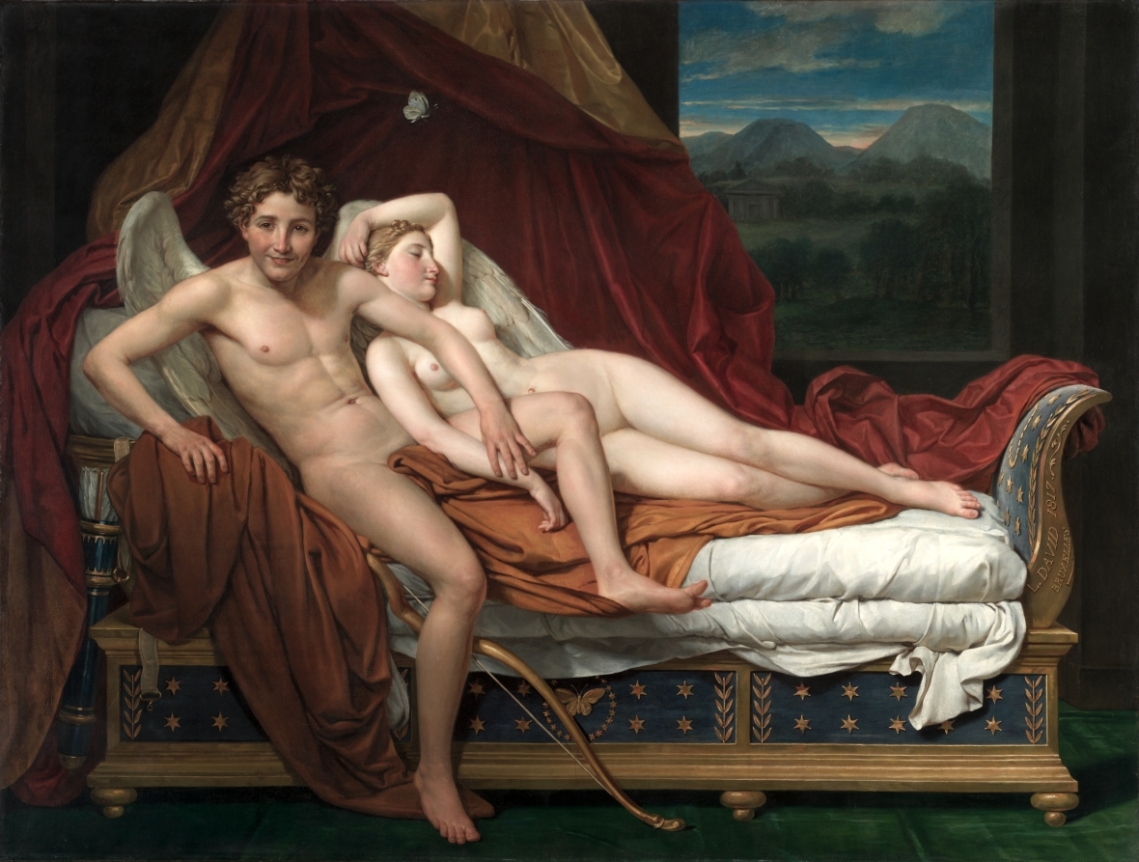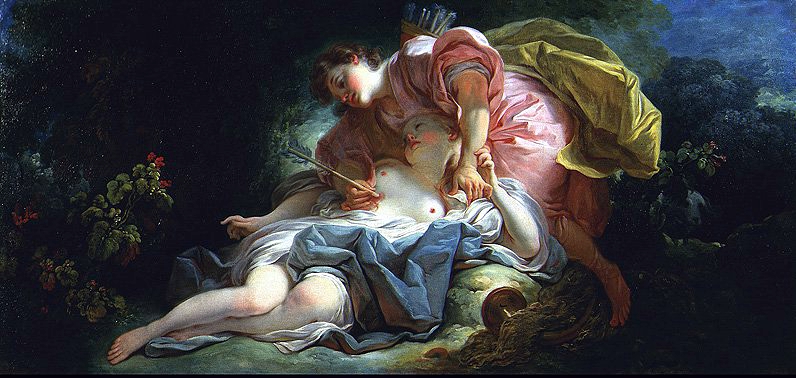Triumph of Venus| 1740 | Oil on Canvas | Francois Boucher

Francis Boucher was born in Paris and was one of the most celebrated decorative artists of the 18th century (Francis Boucher Biography, 2017). He was one of the most well known Rococo artists of his time. Triumph of Venus depicts Venus who was born of the sea. This painting shows cold colors and bold composition which are signature to the Rococo style. Morality and the Art of the Classical Era is what is connecting all three of my chosen pieces. This piece pushes the boundaries of most religious paintings and while playing with the idea of morality where it is not so important. The naked people were openly and freely expressing sexuality and there is a hidden youthfulness shown.
I think this piece is beautiful and very captivating. The colors and the focus on the ocean is what draws my attention, I think the paleness of the bodies really grabs your eyes to the center of the piece. One of my favorite parts of the piece is seeing the little naked angels playing with the fabric which brings so much texture to the piece.
Cupid and Psyche | 1817 | Oil on canvas | Jacques – Louis David

Jacques Louis David was born into a wealthy family from Paris. He struggled with school because of a facial tumor which impeded on his speech so he turned to art as a way to express himself. David uses this piece to show the conflict of idealized love and physical reality. The story goes that, cupid visited Psyche nightly under the condition that his identity was not known. This also shows a lack of morality in the painting as you can see the smirk on cupids face at his sexual conquest (Cupid and Psyche, 2017). Neoclassicism began to practice showing more morals in the painting but Jacques-Louis David pushed the boundaries of the time to paint this greek mythology influenced piece.
This piece gives me mixed emotions because of the story behind the piece, that he was practically taking advantage of her and the piece makes him seem so accomplished and her reaction is more embarrassed.
Cephalus and Procris | 1755 Oil on Canvas | Jean-Honore Fragonard

Jean-Honore Fragonard is often associated with his paintings of frivolity but he was also a very gifted Rococo painter. He often painted religious subjects, historical and mythological scenes showing a keen sense of human folly which leads into its association with Morality and the art of the Classic Era. He mainly painted light hearted erotic scenes for his private clients. This shows that most of his pieces like the one above lacked the common morals of the time and thats why it would not be painted for a church. This piece is also from the Rococo period because of the light colors and contrast shown. The story above is about Cephalus and Procris who were happily in love, when Eos the goddess of Dawn takes Cephalus to her bed where she then gets annoyed of his constant talk about his wife Procris. She finally returns him to his wife where Eos puts doubts in Cephalus’s head about his wife’s fidelity where it shows it leads to the painting above. Procris gets accidentally killed while Cephalus is hunting and she was spying on him because of rumors from a gossip (Shmoop, 2008).
I love this piece because of the Greek mythology behind it, the tragic almost Romeo and Juliet type story that we see all too often. The painting really draws on their emotions of sorrow and regret but also their love for each other. Rococo period is one of my favorite art periods because of the light colors used and the flawlessness of their skin, it makes the people look so fragile and delicate almost angelic.

Hello Bridget, I like that you chose Rococo pieces. While they may have been considered frivolous back in the day I really love their lightness and lack of rigidness. You can tell that these pieces are of the Rococo era, because of the nudity, pastel colors, the not-so-serious subjects depicted in the paintings, and the cherubs. I think that it’s paintings like these that really fueled the fire of the growing middle class and the uprisings against the aristocracy.
LikeLike
I love those works you chose!! I found them to be very interesting and tasteful, they all flow together even though they are done by different artists. This works have made me fall in love with Rococo era art. I love the lightness of the art and color choice. I also love the meaning behind the works.
Triumph of Venus was very interesting to look at. I love how you pointed out the cupids. To me this shows innocence and fun. Give the painting a playful element.
Here is a link to a site you might enjoy! http://www.artble.com/artists/jean-honore_fragonard/more_information/biography
LikeLike
Bridgett-
Thanks for the thoughtful analysis of these Rococo works. Although I prefer the neoclassical style of the era, these are undoubtedly beautiful works. Because this assignment required three different works, I will break down my comments into three sections, one for each work of art.
To add to the learning I want to point out that Rococo art is extremely frivolous. French aristocracy were commissioning frivolous art while their country crumbled around them. At the time they lost control of their colony holdings in Louisiana, India, and Canada. They had several embarrassing defeats yet the aristocracy were dressing absurdly, building extravagant buildings, and commissioning extravagant art. They had lost touch with reality, which added to losing support from the lower class.
Triumph of Venus| 1740 | Oil on Canvas | Francois Boucher
I really enjoy this piece. In particular, I love the way the lines and color of the water. I love the color pallet of the composition. The crest of each wave is near-white, while the bottom of each wave is dark. I love how the lines of the cliffs in the background and the waves of the sea complement each other. In fact, the lines in the whole piece complement each other. The artist uses similar shapes and lines throughout the piece, except on the human skin. It causes the humans, and cherubs, to stand out more in the picture. It also creates an ethereal feeling.
This painting fits the rococo theme because it is romantic and indulgent. We also see cupid as a character in the piece. The artist also uses nude subjects in an inappropriate position.
Cupid and Psyche | 1817 | Oil on canvas | Jacques – Louis David
This work is probably my favorite of the three works you chose. I love the rich colors the artist chose. The luxury of the textiles is depicted in his work. This piece is the newest work of the three shown. I wonder if it was more influenced by the neoclassical movement than the other two. There are more geometric shapes in the composition, while the other two are more flowing.
I can see why people would be appalled by these this style of art. This one in particular is a little risqué. The smirk on his face really makes him seem arrogant about his conquest.
Cephalus and Procris | 1755 Oil on Canvas | Jean-Honore Fragonard
This is probably my least favorite painting that you chose. I appreciate this work stylistically, however. The folds in the clothing are especially well done. The pale, almost angelic looking skin with flushed cheeks was popular at the time. I also love the geraniums growing in the background. The thing that I don’t like about this painting is the lighting. I know that the artist is trying to bring attention to the scene unfolding in the middle of the painting, but I would love to be able to see more of the
LikeLiked by 1 person
SleepyBridget, I really enjoyed your thorough analysis throughout these three pieces. In my analysis I chose to take a different approach, and decided on how Scientific Discoveries influenced the art of the 1700s. I chose this because I am deeply interested in how science had evolved in the 18th century. I found the rococo style rather boring, due to the bland colors.
In your first piece, I found the backstory to be quite fascinating. I like how you explain the youthfulness at play, and the ocean gives it a remarkable element. Rather than being portrayed in a grassy field / forest like other pieces, the ocean gives it a more mystical feel. You noted, that the piece depicts them openly expressing sexuality. At first, I could not see this since it seemed to be more of a playful setting, expressing nudity. The children flying around also gives that impression, but once I looked closer the only instance of sexuality I could find was the women in the bottom left of the painting. Regardless, I found all three pieces to be unique yet similar to each other. They each have a soft undertone and are all ideal examples of the Rococo style.
LikeLike
Bridget, as always I love the pieces of work you choose to display. Something that drew me directly to the paintings, were the bright and vibrant colors. Something that was very interesting to me, was the almost magical aspect of the first painting. Something I was not a a huge fan of was the nudity.
LikeLike